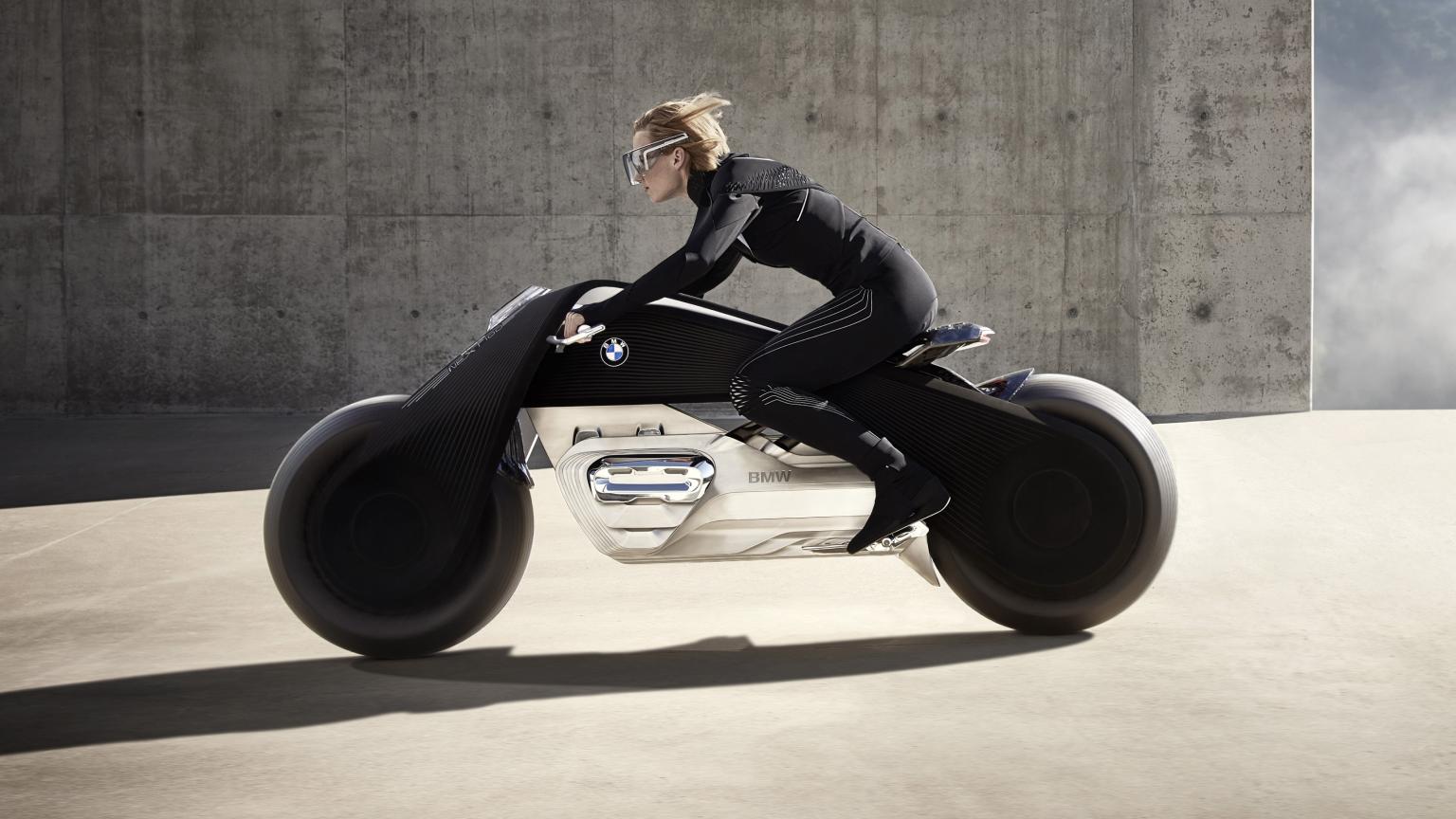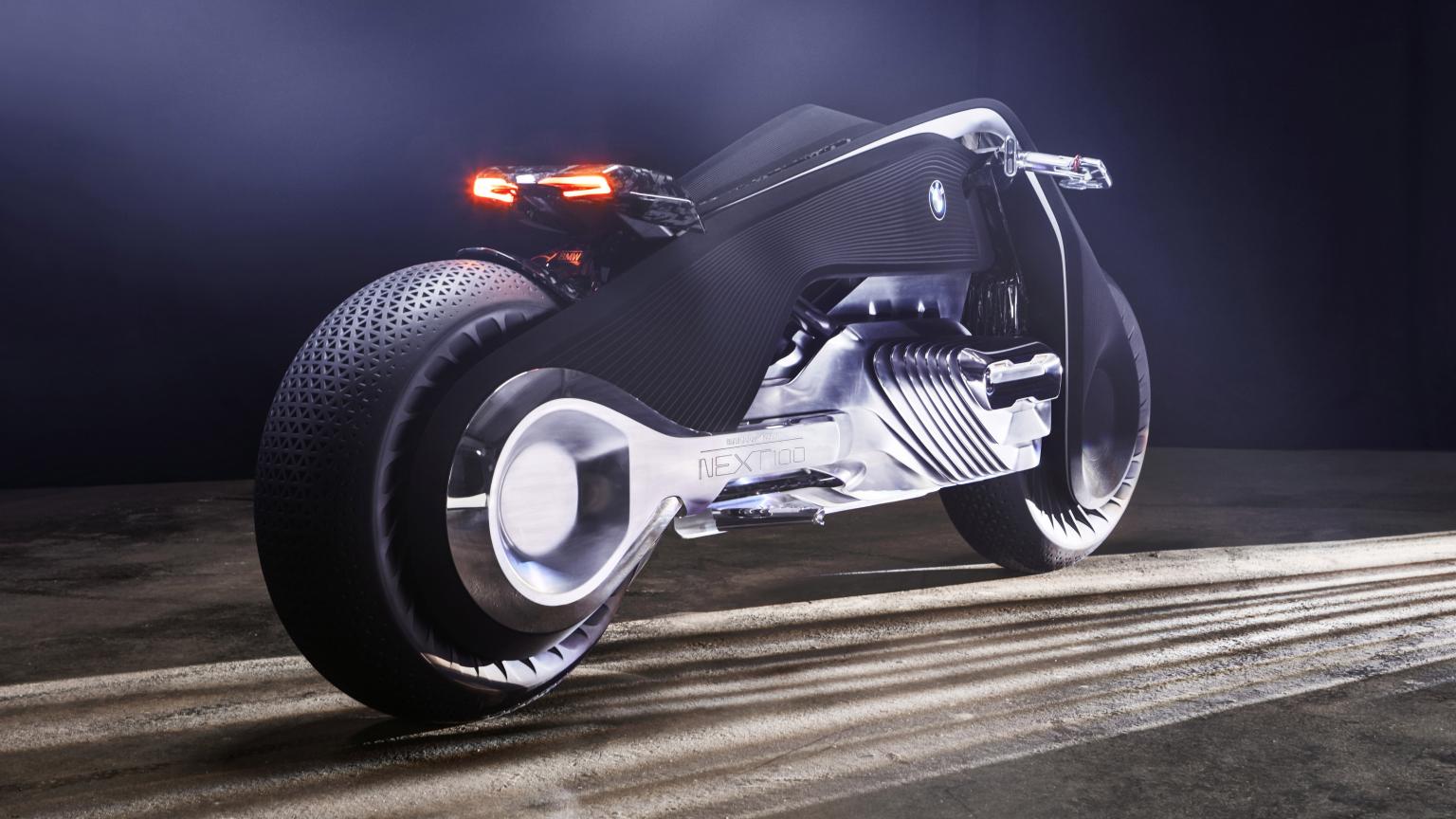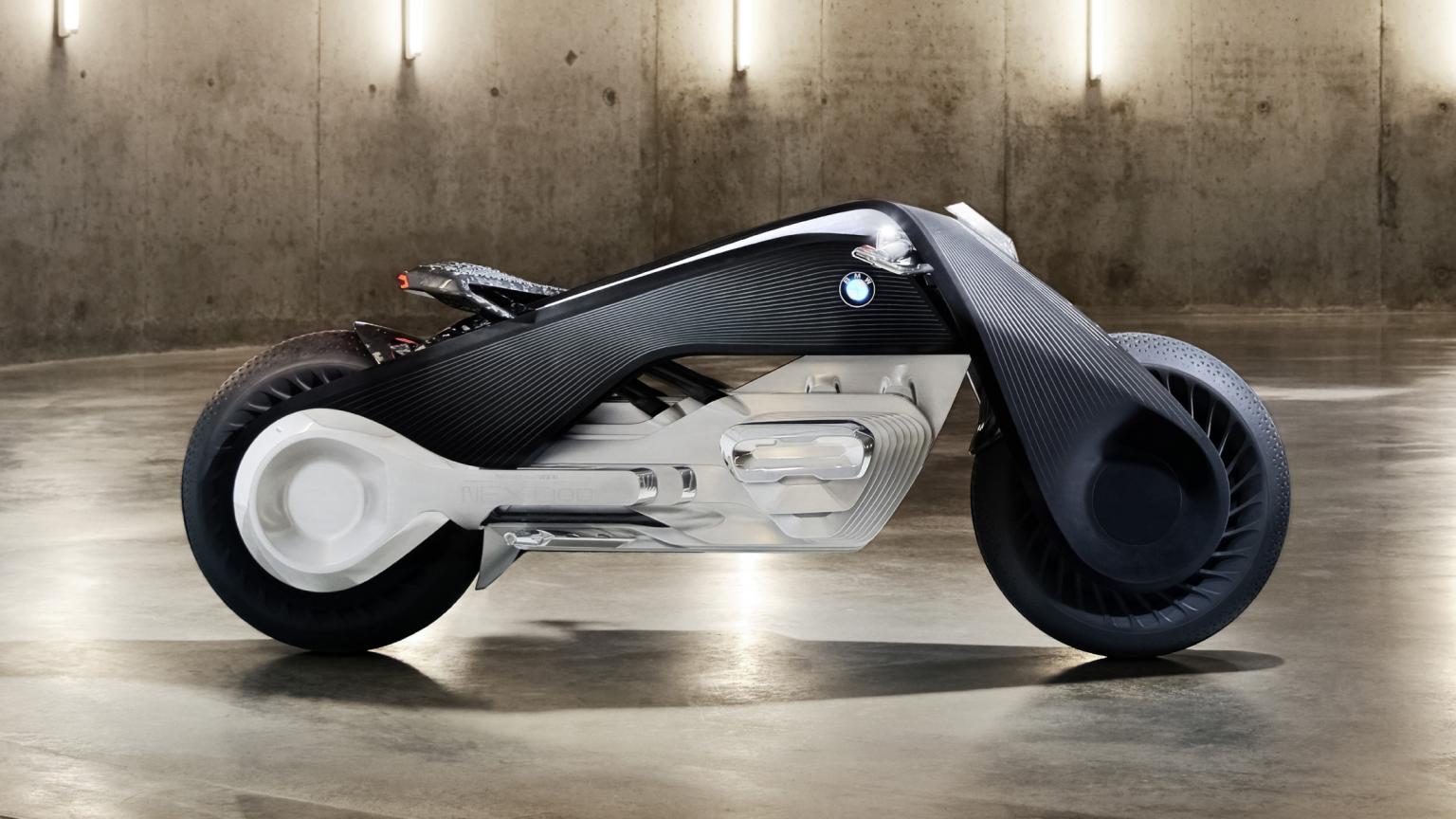
Following on from radical MINI, Rolls-Royce and BMW ‘Vision Next 100’ concepts in 2016, the BMW Group has rounded off its quartet of centenary celebrations by reinventing the motorbike. Now, we know that bikes aren’t really our thing here at Top Gear, but trust us on this one - even staunch four-wheel advocates will be salivating at the outrageous tech that Motorrad, BMW’s bike arm, has thrown at its showpiece.
Firstly (and most importantly if you value your limbs) it’s impossible to tip over, despite sticking with the traditional layout of two wheels and an engine between your legs. What BMW calls “active assistance systems of the future” automatically balance the motorbike if they detect a topple is imminent – although, presumably, the rider can still fall off and watch their bike ride happily into the sunset.

When stationary, too, there’s no need for a fiddly side stand – just hop off and the bike remains upright, so long as it’s switched on. The idea is to trim the amount of lean allowed for novices, boosting their confidence, but still allow pros to scrape their knees on the tarmac, should they so wish.
BMW doesn’t go into any more detail than that, but we understand giroscopic sensors, much like you’ll find in a Segway, keeps it standing to attention on two wheels. Speaking of wheels, the tyres are fitted with a “variable tread” system, so no need to swap between slicks and knobblies - there’s grip on track and wet roads.
BMW says it was keen to keep the raw, analogue nature of riding a bike intact, while introducing next-generation powertrain, safety and connectivity tech. So, while cues like the black frame triangle – a reference to the very first BMW motorbike, the R32, from 1923 – and sections that protrude outwards from the power unit when the bike sets off (to mimic the classic boxer-twin, despite the powertrain being fully electric) hark back to the good ol’ days, here the frame and wheels are a single unit.
This ‘Flexframe’ allows the bike to steer – turn the handlebars and the entire frame articulates to change direction providing more resistance at high speeds, as less for slower manoeuvres. The flowing bodywork is covered in a matt-black fabric ‘skin’, while the bike’s central spine and seat unit are carbon fibre. As for suspension, well, it doesn’t really have any. Fortunately, concepts don’t have to worry about such details.

You’ll notice a distinct lack of buttons, that’s because motorbikes tend to requires both hands to drive. Information, therefore, is fed to a smart visor that provides wind protection (there’s no need for a full helmet, apparently, given the bike’s self-correcting tech) and shows relevant data in four designated display areas. What you see depends on your eye movements, so look straight ahead and you’re free to concentrate on the road, look up and you get a feed from the rear view mirror, look down and you can check your maps, and select functions by prodding your finger on the virtual projections. The system can even deliver the optimum speed and banking angle for an approaching corner.
A rather fetching black and white suit (BMW thinks biker clothing will become more fashion orientated in the future, they obviously haven’t been to the Bike Shed in Shoreditch) senses the outside temperature and either cools or warm the ride, and is fully connected to the bike, too. Vibrations in the leg and arm sections correspond to sat-nav directions, and at high speed the neck section inflates to provide extra support for your head.
So what do we think, readers? Is a motorbike that doesn’t fall over enough to get more of you out on two wheels?
